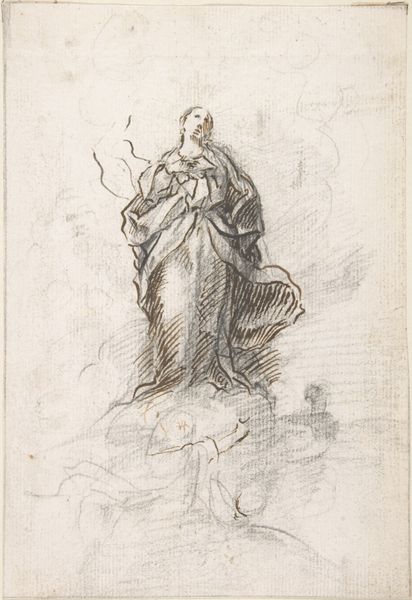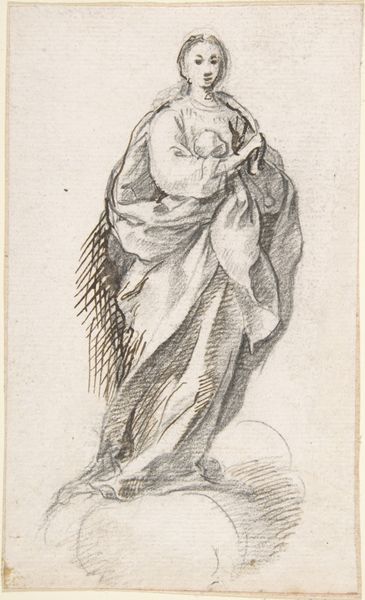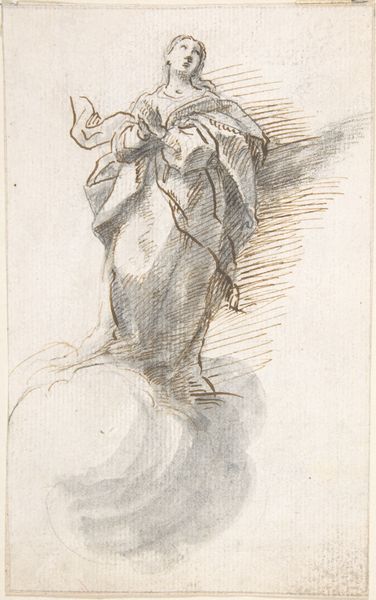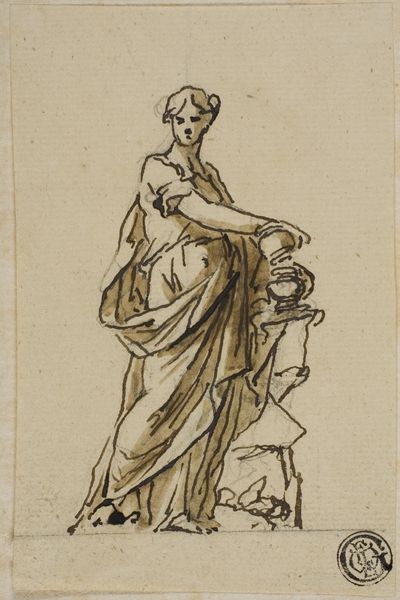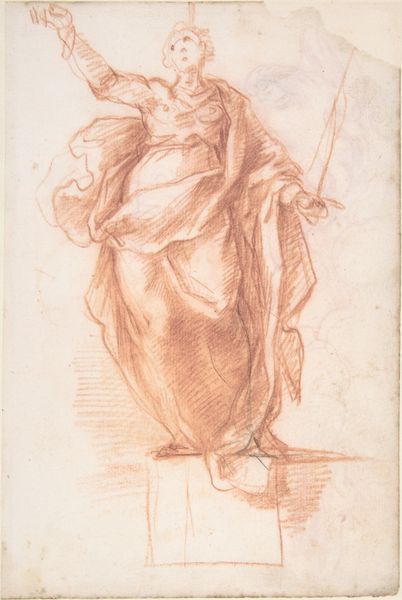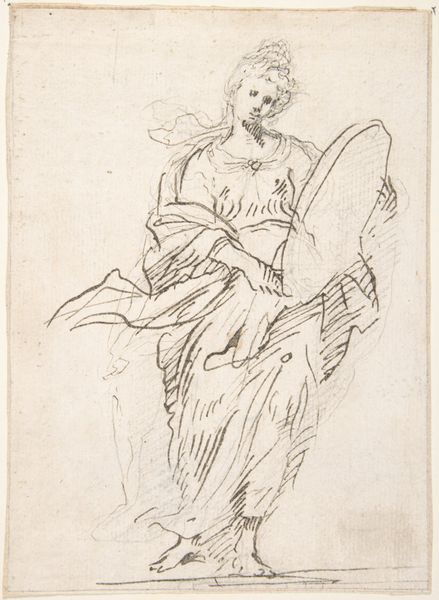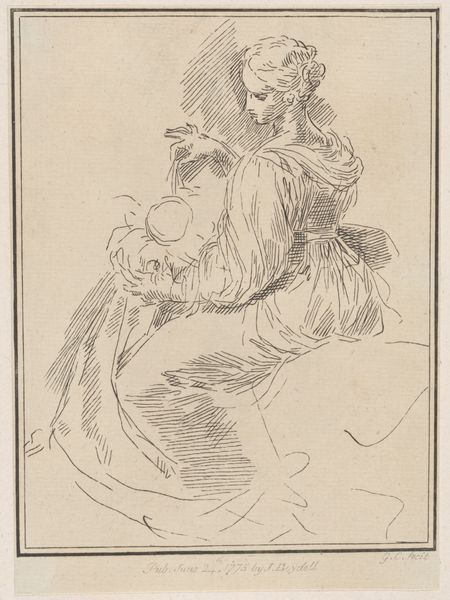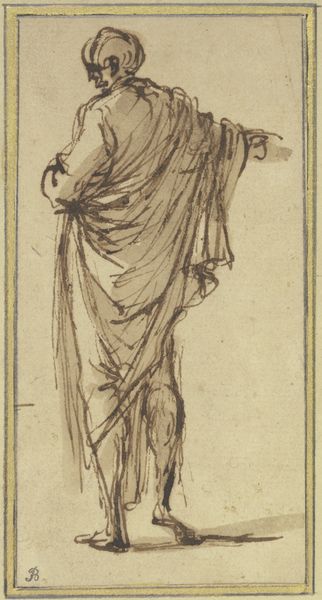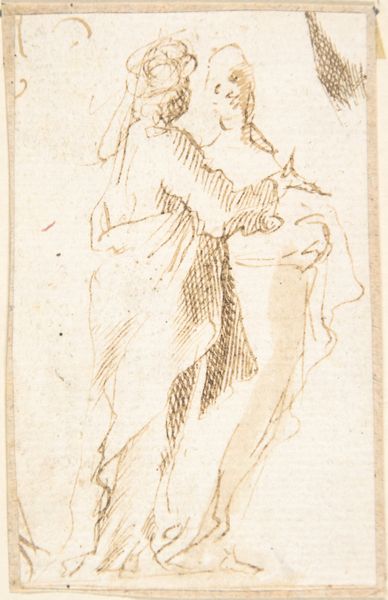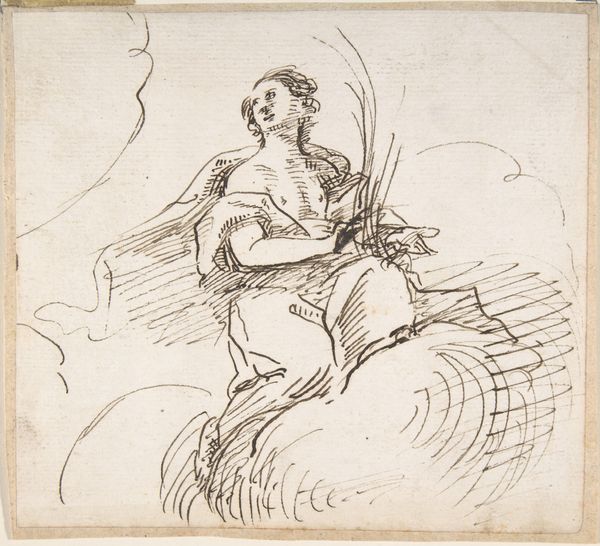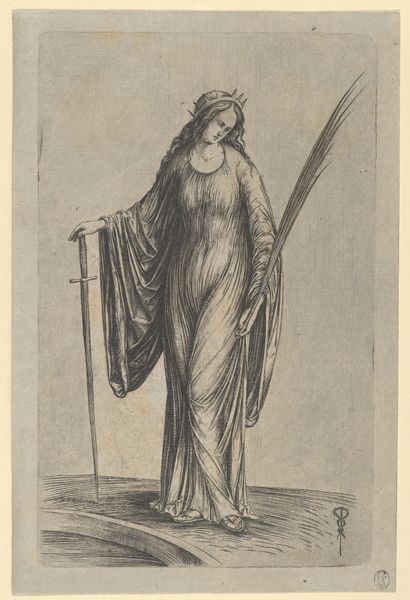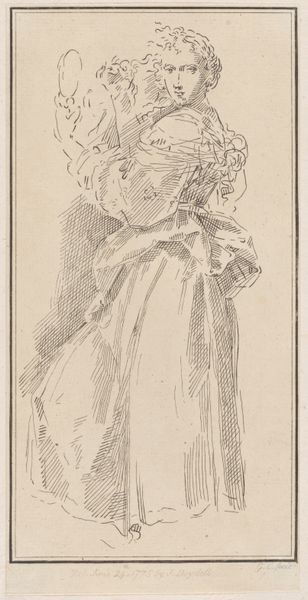
Virgin of the Immaculate Conception Standing on Clouds 1695 - 1705
0:00
0:00
drawing, print, ink
#
portrait
#
drawing
#
baroque
# print
#
figuration
#
ink
#
pencil drawing
#
line
Dimensions: 5-1/2 x 4-3/16 in. (14.0 x 10.7 cm)
Copyright: Public Domain
Editor: Here we have Pedro Duque Cornejo’s “Virgin of the Immaculate Conception Standing on Clouds,” created between 1695 and 1705, rendered in ink. It has a very fluid feel, a sense of upward motion. What compositional elements stand out to you in this piece? Curator: Note the strategic use of line. See how hatching and cross-hatching defines form and volume. Observe how this technique transforms simple lines into a complex interplay of light and shadow. It guides the eye, creating depth and texture, primarily through contrasts of light and shade within the drapery. Editor: Yes, there’s a definite emphasis on the drapery, almost more so than the figure herself. Is there a reason for that emphasis, do you think? Curator: It's possible. One might suggest the drapery not merely clothes but embodies her divinity through its intricate textures and dynamic folds. Observe, too, how the dynamism of the swirling clouds below juxtaposes against the more serene countenance of the Virgin, an example of balanced asymmetry? What thoughts arise as you observe these oppositions? Editor: I’m thinking about the interplay between the figure and the clouds and how the use of line blurs the boundary between the two. This reinforces her divine, ethereal nature. I originally thought it looked simple, but the execution feels quite sophisticated on closer inspection. Curator: Indeed. Through line and form, Duque Cornejo compels us to delve into questions about how we perceive divinity itself, rather than accept conventional representations. We see beyond the surface into its structure. Editor: It’s amazing how much complexity can be communicated through a seemingly simple drawing. Curator: Yes. Focusing on technique enhances our appreciation for the artist’s skillful translation of theological themes into visual form.
Comments
No comments
Be the first to comment and join the conversation on the ultimate creative platform.
